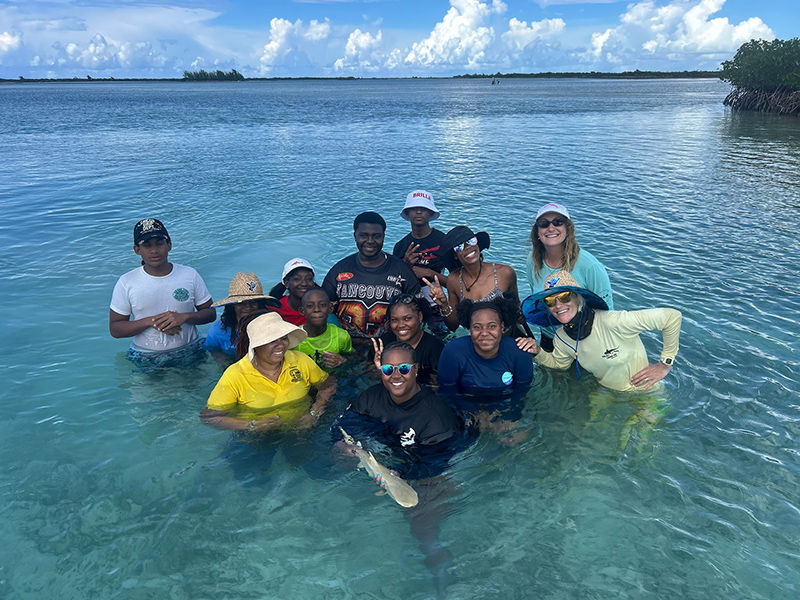Voyage to the Land of Great Whites
- Sharks4Kids

- Jan 22, 2019
- 4 min read
Recently, I had the amazing privilege to travel to the island of Guadalupe, off the coast of Mexico, where the season of fall is synonymous with the presence of many Great White Sharks. Amazingly, because this trip was organized by Sharks4kids, I was accompanied by many other shark enthusiasts who were almost as excited as me to jump into the cages and see those legendary animals. The funny thing is that the cage diving was the easy part of the trip, the hard bit was getting to the island itself. The crossing from San Diego to Guadalupe was like riding a bucking bronco without any handholds, fruit was flying across the galley, GoPros were falling off of tables, and sleeping in the bunks was one of the greatest challenges I have ever faced in my life. I painstakingly calculated that there was about a 75.3% chance I was taking a tumble in the middle of the night. However, all of those challenges were worth it for the experience that was to follow. Every day of diving started at 7:30 AM and ended at 5:00 PM with me exhausted. Since the air supply was provided from the surface, we all had to wear a very heavily weighted harness to keep us on the bottom of the cage. This also made getting in and out of the cage quite the workout, like 5 seconds of a stair stepper with 50 lbs on your back. Foolishly, I had assumed that being on a boat for five days out in the middle of the ocean was getting me out of the gym, but I was sorely mistaken. Yet, once I stepped down into the cage and looked out at the massive shark that was passing mere inches from what now looked like way-to-small metal bars, I forgot it all. Far from scary, these creatures looked elegant and graceful, showing amazing flexibility in such a large frame. When the bait was thrown into the water on a long rope, the sharks would emerge from the hazy blue depths to investigate and try to get a nice mid-day snack. Far from mindless, each shark seemed to have its own strategy for obtaining the bait. One would come up fast from the bottom and jump out of the water, while another would swim under the boat and cages, and then move slowly towards the bait trying to be sneaky. Even when they missed the fish, the sharks would continue to come around and try, try again. It often seemed as though the whole thing was a game for the sharks, sort of like keep away, and they would keep playing until they won. It’s crazy to think that these massive fish could be capable of such a human-like behavior and yet I saw it with my own two eyes.

The Great White Shark is probably one of the most iconic, and feared sea creatures on this planet. It’s the immediate image that comes to mind any time the word “shark” is mentioned, often because of its appearance in film or TV. Many movies, such as “Jaws,” show Great White Sharks as creatures driven by their need to consume. This is a notion that has carried over to many other shark species and led to wide-spread fear, as well as the fall of many shark populations. Sadly, this wide-spread fear often all stems back to the image of one single shark species, the Great White, the largest predatory fish in the sea. This trip showed me that these animals are incredible and complex, and deserve a healthy respect, not the fear and hate that we often aim at them.

Unfortunately, even at such a remote island, in the middle of nowhere, the footprint of humanity was still visible. One Great White, nicknamed Ropey, whom we saw on many occasions, could not escape a rope that had encircled her body and badly damage one of her gills. Because of this damage, Ropey always swam with her mouth wide open in order to obtain the oxygen she required to live. She would always try to go for the bait, but often could not quite take and hold onto the bait because of her injuries. It was truly a heartbreaking sight to see, but a great example of nature’s plight today. It’s ironic that humans have this deep-seated fear of sharks because we think of them as unstoppable, knowing killers. When in fact it is humanity that is killing off the world’s shark populations with its unconscious, irresponsible behavior of pollution. Ropey is a great symbol to show that at this point, no matter where in the world you are, you’ll find some evidence of humanity. The key to helping out is to recognize the problem and advocate for change. The human will is a powerful, unstoppable force, so when the will of many people are united for a common goal, change is sure to follow.

Thank you Sharks4kids for such an amazing experience, it is something I will never forget.





















